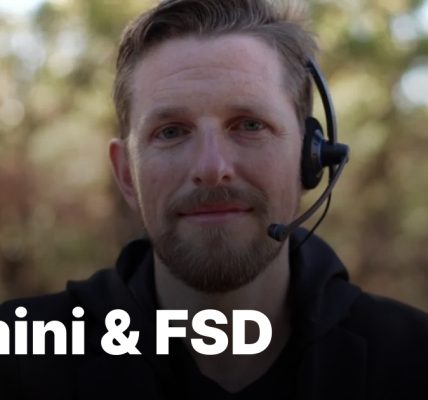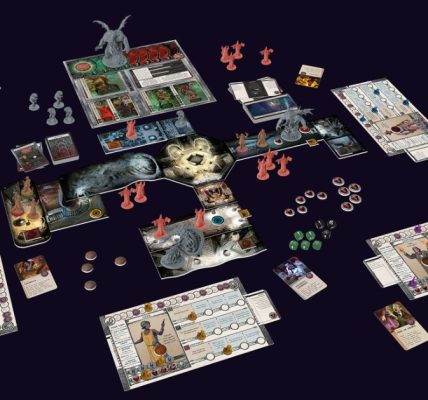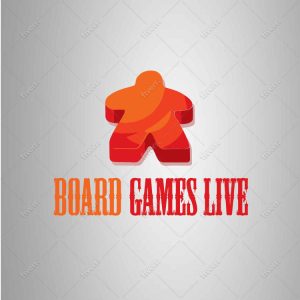Monsters Menace the World was an interesting challenge to bring to life. The prior version of the game, published in 2005 as Monsters Menace America, was something of a cult classic — not well-known, but with an avid following.
At the same time, fans felt some areas of the 2005 version could use improvement. Bringing a twenty-year-old game back in a way that would satisfy existing fans while addressing the areas of concern was our top goal.
The first step was looking at that feedback and identifying the main areas of concern. The two aspects often brought up were:
▪️ The endgame: The final confrontation was the only time monsters directly fought one another. Fans often felt let down by the ratio of military to monster-related action in the original game.
▪️ Monster defeats: Inevitably, pesky humans did take out monsters, and while players weren’t eliminated when this happened, the random nature of regenerating health out in Hollywood in Monsters Menace America created some (and sometimes a lot of) downtime for the defeated player.
Finding solutions to these two elements of the game was the primary goal of the new design. As a secondary goal, I also felt that the playable monsters were too similar and could use differentiation. If possible, the new playable monsters would need to be more distinct in both their theme and playstyle. This took up most of the design, so I’ll touch on it more specifically later as it proved to be important.
Once these goals were settled on, the next question was, who would the playable monsters be? This consideration was important as they are ultimately the stars of the show.
Instead of either using old favorites or creating an entirely new roster, the best option seemed to be a bit of both. Tomanagi and Konk naturally had to return, so I decided it would be a 50/50 split. Of the other four playable monsters in Monsters Menace America, Zorb seemed the most unique and iconic, so it got the nod. Gargantis, Toxicor, and Megaclaw would have to sit this one out, for now.
In their place, I came up with three new monsters, two of which have real-world mythological inspirations: Nessie, Chupacoloso, and Strigoika.
To make this game truly a titanic monster struggle, I wanted monster clashes throughout the game rather than just during the finale. Since the game supports only 2-4 players, the potential for these clashes was still a bit limited.
The solution was to create a new type of unit: minion monsters. These monsters were lesser in power than the playable monsters, but they would all be unique and a threat to the military units. This was an opportunity to include ideas for the playable monsters that did not make the cut, such as Pollendust or Gargantis, as well as a good way to incorporate the “military monsters” from Monsters Menace America.
Originally, the idea was you would find these minions throughout the course of the game, but to ensure that we tested these minions enough, during playtests everyone started the game with a minion to give them more game time — and it quickly became apparent that the minion monsters, along with the additional options they provided, were incredibly popular. Starting the game with your first minion just stuck as a core part of the gameplay.
The solution to the first design challenge (the final confrontation) was to let monsters battle each other throughout the game rather than just at the end. This led to challenges of its own as the accrual of infamy was indirectly tied to that final confrontation in the 2005 version, and the final confrontation was the game’s victory condition! Without that confrontation, infamy would be less useful and a new way to win the game was needed.
The natural conclusion here seemed to be one that killed two pterosaurs with one boulder: Infamy would be the objective of the game. Turning infamy into points that you accrue gave it more of a purpose, while eliminating the need to spend it or have a final confrontation. Though the specifics of scoring infamy changed throughout testing, the general concept proved to be a popular new mechanism alongside minion monsters.
Since monster conflict throughout the course of the game was a goal, monster defeat became much more likely. Getting stuck somewhere regenerating for a few turns would be much more gamebreaking in the new design, so instead of making defeat punishing, it was treated lightly. A defeated monster could respawn on their next turn, but somewhere else in the world. Your plans would likely be disrupted, but this kept the game moving, and if you found yourself trapped, suffering a defeat and moving to another part of the world could even have some small benefit.
Once these basic concepts were figured out, nailing down the rest of the design proved to be fairly easy. The largest hurdle remaining was making all the monsters, minions, and militaries feel unique.
In MMA, the primary attribute separating monsters from one another was their special ability. Naturally, those abilities had to stay since they were the primary thematic connection for that monster. The returning monsters originally had iterations on their existing abilities, but Zorb and Tomanagi needed changes in the course of testing. Konk’s was largely the same as in MMA since the ability worked and was thematically on-point.
However, more was needed to make playing each monster feel special, so I decided that the mutations should be tailor-made to each monster. In MMA, any monster could get atomic breath, high-octane blood, or any of the other myriad mutations. By limiting which ones each monster had access to, each of them emerged with a more cohesive theme.
I went through the previous game’s monster cards and identified which felt thematic to each of the six playable monsters’ concepts. Often the ability was dramatically changed, even when the name was retained. The general rule was that each monster would have two mutations that it shared with one other monster, and two that were unique to it.
The last thing that changed to give monsters more specialization were the stat lines. Originally, the move, attack, defense, and damage stats were all nearly identical. Slight alterations, though, let them lean into their individual themes a bit more. Tomanagi moves slower, but hits harder. His special ability and mutations allow for additional attacks to ramp up his power with that 4 damage. Chupacoloso has more attacks, but hits for less (and is himself harder to hit) due to being a smaller, more agile monster. And so on.
These same thought processes were applied to minions, especially once it became clear that minions would be a core mechanism. The minion that received the most iteration was Pollendust, who was beloved by testers!
Originally, Pollendust’s ability was good (as it made her quite hard to hit), but not fun to play against. She ended up getting the most unique design. As a friendlier, helpful minion in the lore I put together, she was able to grab mutation sites for your monster and bring the mutation to you. She was also one of a class of minions I thought of as “almost monsters”, i.e., if I could have done more playable monsters, they would have been included. These minions had sturdier statlines, closer to what a playable monster might have (but ideally balanced against their abilities). The ten minion monsters ended up feeling unique and led to different strategies, depending on who your starting minion was. I feel like they were one of the big successes of the design.
The mutation system worked well enough that when it came time to work on the militaries, they started with the same basic framework for their upgrades. I went through the military upgrades from the 2005 game and tried to assign a couple to each military that would be shared with another military, and a couple that would be unique. Ultimately, many of them had to be completely redone in the course of testing, but this was at least a starting point. As a result, the military upgrades are a bit more diverse than the mutations.
The trickiest decision for the militaries, however, was how to distribute the different units. Monsters Menace America had militaries based on branches of the U.S. military and the four unit types were apportioned in ways that made sense: the Air Force had fighter jets, the Navy had submarines, etc.
Since the scope of the new game was now worldwide, each military would represent an entire geopolitical faction. Since the militaries didn’t have unique special abilities like the monsters, until you started getting upgrades, they would not feel unique if they all had access to the same units. Therefore, I decided to stick to just four military unit types, with each military having access to only three of those four types. Ultimately, tanks proved to be the bread-and-butter of militaries, so everyone ended up with them, with the fighters, rocket launchers, and submarines appearing in two or three militaries at most.
The fighters and tanks didn’t change much from MMA aside from number tweaks, but submarines went through many revisions, gaining a couple of unique abilities. The submarines retained the ability to be deployed as cruise missiles, potentially dealing a large amount of damage to a monster (at the risk of mutating the target). This was a binary ability that was challenging to balance. Either the cruise missiles were too strong, resulting in the submarines never getting used, or the cruise missiles were too ineffective.
Giving submarines the ability to participate in battles in adjacent spaces (without risk of taking hits themselves) while also removing any fired cruise missiles from the game – hit or no – proved to be just the right balance on both sides. This also ended up inspiring a military upgrade for the Mediterranean Coalition when they were struggling: long-range guidance. This upgrade allows their rocket launchers to fire into nearby spaces, granting a surprisingly effective boost.
I could discuss many other aspects of the design, but these three areas were the most important, and I hope the solutions we came up with lead to a fun game that you will enjoy, both old fans and new.
This game was a pleasure to work on, and I’d like to thank Renegade Game Studios for giving me the opportunity to do so, in addition to thanking all of the testers who helped bring the design to life — in particular, my super lead playtester…you know who you are!
Happy stomping!

/pic8780533.jpg)
/pic498074.jpg)
/pic9108842.jpg)
/pic8790350.jpg)
/pic9053418.jpg)
/pic9053412.jpg)
/pic9108857.jpg)
/pic9053419.jpg)


